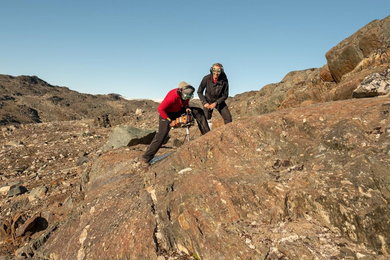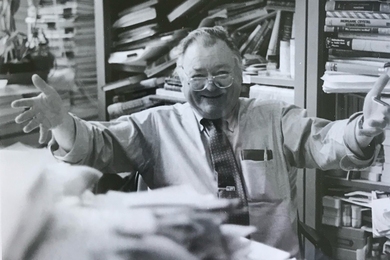Plans to gut and renovate 33 "workhorse" classrooms, starting with 10 in Building 2 this summer, were announced by Provost Joel Moses at this month's faculty meeting on February 19.
The announcement capped a whirlwind effort involving the commitment and cooperation of faculty, administration and staff.
In an interview after making the announcement, Dr. Moses said, "We are committed to bringing our teaching environment up to the standards of excellence for which MIT teaching and research are known."
Professor Lawrence S. Bacow, chair of the Faculty Policy Committee, who provided early support and impetus for the project, was pleased that it proceeded expeditiously and smoothly.
"These renovations will be greeted with great enthusiasm by both faculty and students," said Professor Bacow. "It's very gratifying. After all, teaching and education are at the core of our mission."
Dr. Moses noted that the renovations mark a rebirth of Project 2000 started by the late Dean Margaret MacVicar. Eventually, all of the Institute's classsrooms will be evaluated. Many of the "workhorse" classrooms have not been updated for years, except for periodic painting and the occasional replacement of lighting fixtures.
In addition to those upgrades, the renovations this summer will encompass heating and air conditioning, new furniture, modern chalkboards, and storage areas for slide machines and other equipment. Lecturers will have audiovisual hookups to acccomodate a desktop computer in every classroom. Two will be wired for personal computers or Macintoshes at every seat.
Impetus for the renovation campaign was supplied by Professor Leigh H. Royden, associate chair of the faculty, who broached the issue at a meeting in September. She had taught freshman physics in Rm 5-233, a classic "workhorse" classroom where "you had to shout to be heard" over the traffic noise on Massachusetts Avenue.
Realizing the effect that such bleak surroundings had on the students in their first exposure to MIT academics, Professor Royden said, "I became passionate about the classroom issue." She quickly discovered that she wasn't alone. "You know how contentious the MIT faculty are, yet every time I mentioned it, everybody agreed--we had to something about those classrooms," she added.
ON-SITE MEETING
The clincher, Professor Royden said, was a committee meeting in Rm 5-233 at which the participants could not communicate over the street noise without shouting. "That brought it home," she said.
As a result of her urging, classroom renovations were given high priority in setting an agenda for the fall semester. In addition to Professors Bacow and Royden, key supporters included Rosalind Williams, dean of undergraduate education; Associate Professor Charles Stewart, head of the Committee on Undergraduate Programs; and Associate Dean Margaret S. Enders.
Professor Bacow broached the subject with President Charles M. Vest, who gave enthusiastic support. A working group consisting of Dean Enders, Professor Stewart, Associate Planning Officer Michael K. Owu, Associate Registrar Mary R. Callahan and David W. Myers, an architect and the manager of design services for the design and construction section of Physical Plant, identified the classrooms, developed a renovation plan and created a budget. Dean Williams made a formal proposal to the Committee on Renovations and Space Planning. The project was approved last month.
"Everybody came together and supported it," said Professor Bacow. "It's a wonderful example of faculty and administration working together to do something good for the students."
Last summer, eight classrooms and lecture halls were renovated in Building 51. In addition, the renovation of Building E56 included the construction of a 55-seat lecture hall and a 20-seat classroom. Seven classrooms in Building 56, including 70-seat and 60-seat lecture halls, were brought on-line for the spring semester.
A version of this article appeared in MIT Tech Talk on February 26, 1997.





